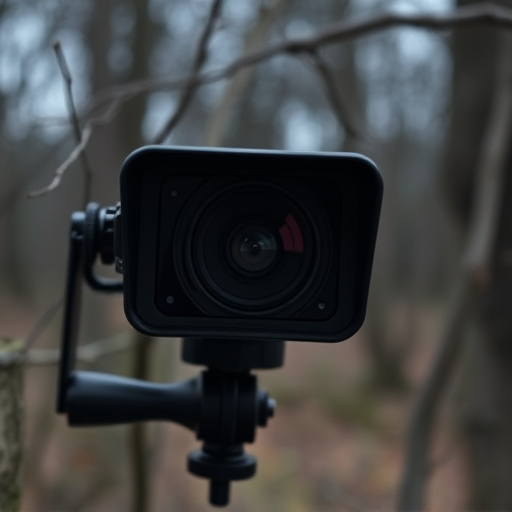Wireless hidden cameras in apartments pose a significant privacy threat, with advanced technology enabling discreet surveillance through everyday items like lightbulbs or smoke detectors. To protect against these devices, it's crucial to stay informed, regularly check utility rooms and attics, keep personal spaces private, and use smartphone apps leveraging AI and image recognition to identify potential hidden cameras. While these tools are effective, users must respect privacy laws and obtain consent to avoid legal issues, focusing on legitimate safety measures while preserving confidentiality in public and private spaces.
Wireless hidden cameras in apartments are a growing concern, infiltrating personal spaces with covert surveillance. This article explores the detection of these devices using smartphone technology. We delve into understanding the intricacies of wireless hidden cameras and how modern smartphones can be leveraged to identify their presence. From advanced techniques to legal privacy considerations, this comprehensive guide equips readers with knowledge to protect against invasive surveillance in residential settings.
- Understanding Wireless Hidden Cameras for Apartments
- The Role of Smartphone Technology in Spy Camera Lens Detection
- Advanced Techniques for Uncovering Hidden Lenses
- Legal and Privacy Considerations for Spy Camera Detection Using Phones
Understanding Wireless Hidden Cameras for Apartments
Wireless hidden cameras in apartments have become a growing concern for tenants and homeowners alike, as technology advances make it easier than ever to install discreet surveillance devices. These cameras, often disguised as everyday objects like lightbulbs or smoke detectors, can be controlled remotely via smartphone apps, allowing unauthorized individuals to monitor activities within living spaces without consent. Understanding the presence and capabilities of these wireless hidden cameras is a crucial step in protecting privacy rights and ensuring safe, secure environments.
Tenants should stay vigilant and informed about potential risks, such as landlord-installed cameras or malicious neighbors using advanced technology for invasive surveillance. Regularly checking utility rooms, attics, and other inconspicuous areas for unusual devices can help identify hidden cameras. Additionally, keeping personal spaces private and securing sensitive items can make it more difficult for unauthorized individuals to capture compromising footage. Awareness and proactive measures are key in countering the use of wireless hidden cameras for apartments.
The Role of Smartphone Technology in Spy Camera Lens Detection
Smartphone technology has played a pivotal role in making spy camera lens detection more accessible and user-friendly. With advancements in mobile device capabilities, users can now employ their phones as powerful tools to identify hidden cameras in apartments or any other spaces. Modern smartphones are equipped with high-resolution cameras themselves, which can be utilized to capture images or videos of potential hidden lenses. Additionally, specialized apps have been developed that analyze these visuals and help detect subtle signs of covert surveillance equipment.
These apps often use artificial intelligence and image recognition algorithms to scan for unusual patterns or shapes indicative of spy camera lenses. By combining the phone’s camera with these innovative apps, individuals can proactively ensure their privacy by identifying potential Wireless Hidden Cameras for Apartments. This technology empowers folks to take control of their personal spaces and maintain a sense of security in an era where surveillance concerns are ever-present.
Advanced Techniques for Uncovering Hidden Lenses
In the ever-evolving landscape of privacy and security, advanced techniques are necessary to uncover hidden lenses in wireless hidden cameras for apartments. One such method involves utilizing specialized smartphone applications that employ image processing algorithms to detect unusual patterns or distortions on surfaces, potentially indicating the presence of a spy camera lens. These apps can analyze video feeds or still images, searching for subtle anomalies that might be overlooked by the human eye.
Additionally, thermal imaging technology has emerged as a powerful tool in this context. By capturing and analyzing heat signatures, these devices can reveal hidden lenses based on temperature variations, making it an effective way to detect covert surveillance equipment. This technique is particularly useful in apartments where electronic devices emit distinct heat patterns, allowing for the identification of unusual heat sources that could indicate the presence of a wireless hidden camera.
Legal and Privacy Considerations for Spy Camera Detection Using Phones
When using your phone to detect spy cameras, it’s crucial to be aware of legal and privacy considerations. While it’s a valuable tool for homeowners looking to safeguard their apartments from wireless hidden cameras, unauthorized surveillance is illegal. In many jurisdictions, capturing or distributing images or videos without consent can lead to serious legal repercussions. Privacy laws protect individuals’ right to expect certain levels of confidentiality in public and private spaces.
When using your phone for spy camera detection, ensure you have permission to survey the area and that no one’s privacy is being invaded. It’s important to respect boundaries and only use this technology for legitimate purposes, such as ensuring safety and security in apartments or other living spaces. Remember, transparency and consent are key in maintaining a safe and legally sound environment.
Wireless hidden cameras in apartments pose a significant concern, but smartphone technology offers an innovative solution with its advanced camera capabilities. By utilizing specific apps and techniques, residents can now actively detect and uncover these clandestine devices, ensuring their privacy. While legal and privacy considerations must be navigated, the power of mobile tech allows individuals to take proactive measures against covert surveillance, making informed decisions regarding their living spaces.
